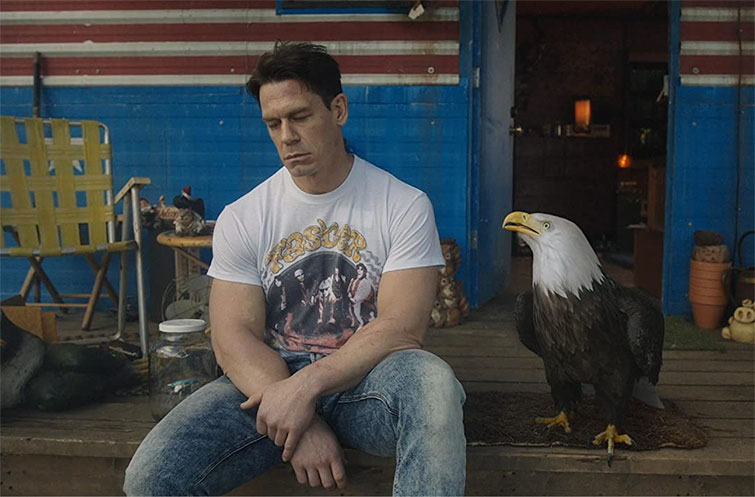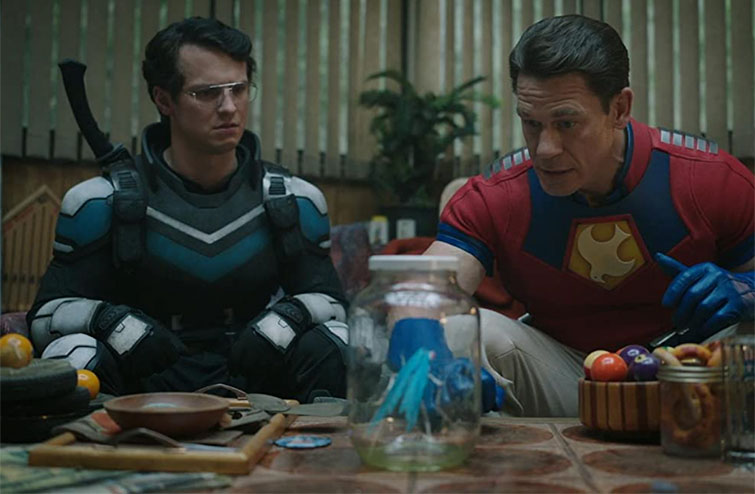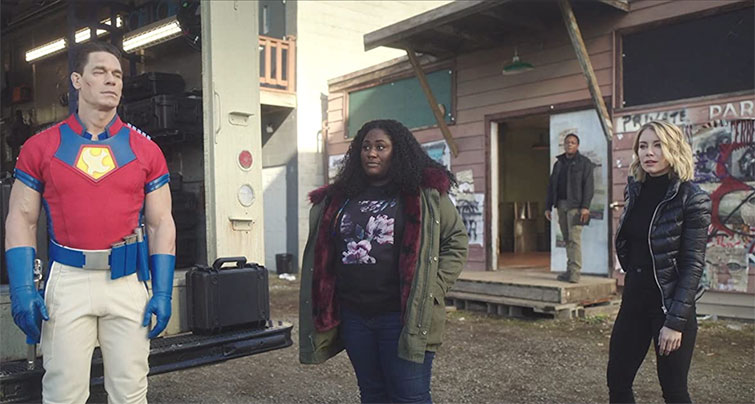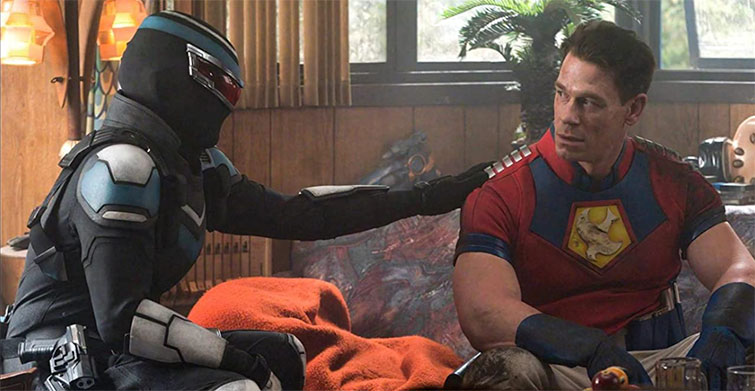
The Secrets of Peacemaker’s Storytelling Success
Peacemaker is the most popular television show in the world. Here’s why its storytelling is so effective.
Television is in love with Peacemaker. In fact, it’s currently the most popular show in the world. ScreenRant reports that the show is the biggest streaming series anywhere, at 69% more in-demand than the average series.
That means more popular than The Book of Boba Fett, The Witcher, and . . . pretty much anything else you’re watching. A spin-off from the events of 2021’s Suicide Squad, Peacemaker is the highest-rated DC Extended Universe project at Rotten Tomatoes.
In the words of Confucius, “That’s huge.”
What does one have to do to claim the title of “Most Popular Show in the World?” Naturally, all the standard elements have to come together in just the right way to deliver a slam-dunk series like this. Writing, acting, cinematography, marketing—the dance is the same even if the dancers aren’t.
But these elements, in and of themselves, aren’t enough to make something this good. Personally, even as a lifelong nerd from the tail-end of Gen X, I’m over superhero or superhero-adjacent content. It’s just been done to death, and even I am bonkers over Peacemaker.
So, what gives? There has to be something we can learn from this smash hit. Sure, timing and luck and a bit of je nais se quoi are in the recipe, but there’s a spirit to this show that dwells in its metanarrative approach to itself?
What do I mean by that? Well, here are a few things we can learn about storytelling from Peacemaker.
Anticipation

Let’s take this case study directly to the source and examine what series creator James Gunn has to say about his show. We’ll begin with a few words about creating anticipation.
As you probably know, we’ve kept it. We haven’t shown anybody. Nobody knows what’s gonna happen in eight. But, I know what’s going to happen. The cast knows what’s going to happen. Some of HBO Max knows what’s gonna happen. We’re all very excited to show people the last episode of Peacemaker. The last episode of this season.
– ScreenRant
This is one of the oldest tricks in the book—releasing most of a story but not all of it. Even if you aren’t a die-hard fan, if you’ve made it through seven episodes of something, and no one knows anything about the eighth, you’re probably still going to watch. Mystery builds anticipation.
If you can create a compelling mystery, then you can probably create a compelling story, so you’re probably worth a viewer’s time. Gunn et al didn’t let anybody see the finale. No reviewers, no promoters—probably not even their parents.
This builds momentum (you don’t want to be left out do you?), and it turns something we’re excessively used to, a season finale, into an event. The NFL Championship Game with the title-we’re-not-supposed-to-say is just another football game, but the architecture of the anticipation leading up to it makes it an event, and people who aren’t even football fans show up to eat junk food and watch The Year’s Best in Advertising.
This mystery effect was the case back in 1999 when The Matrix was headed our way. The tagline for this mysterious game-changer was simply a line lifted from the script’s dialog: What is the Matrix? But it was a powerful mystery. What do you mean, “What is the Matrix?” You tell me! We had pretty much no idea what was coming, but we were there for it.
When it comes to your own work, there’s telling the story (writing your script, producing the content, post-production), and then there’s telling the story. How you bring your work to the world is part of the story you’re telling. It’s part of your story, and that’s part of what we’re showing up for. Modern storytelling is experience-telling—so create anticipation for the experience.
Zeitgeist

Part of creating a smash hit is tapping into the zeitgeist and giving people what they want. Let’s take a classic example: A Christmas Carol. In the mid-nineteenth century, Brits were reevaluating Christmas. Were carols still cool? What were all these new Christmas cards and trees?
Christmas was suddenly a bigger deal than normal, and Charles Dickens tapped into that and gave us Ebenezer Scrooge. It worked out pretty well because it captured the spirit of the age and gave people what they didn’t even know they wanted.
So, how does this apply to Peacemaker? Simple: It’s anti-authoritarian-yet-still-approachable. Peacemaker is over the top, so it never gets too real. If anything is big business in 2022, it’s bucking the system. Wherever you fall on the political spectrum, there’s a bad guy in power (or who has influence) you don’t want any part of.
A lot of people have dialed their sentiments toward organization and authority up to eleven—be that law enforcement or secret coteries of lizard people controlling us from the center of the Earth. Whatever doesn’t float your boat. After two years of global market upheaval, quarantine lockdowns, protests, conflicts, insurrections, and Zoom calls, people have had it.
In 2022, we’re really tired of people telling us what to do. Peacemaker is the anti-hero we need.
I think he doesn’t trust what they’re telling him: Him (Peacemaker) keeping Goff in a jar has to do with what Murn (Chukwudi Iwuji) is telling him. I don’t think he trusts Murn. So what are these Butterflies? What do they want? I don’t think he wants to go head first into what an authority is telling him, which is what he’s done a lot in his life.
– Deadline
Peacemaker is violent and gory (man, the gorilla scene!) and silly and touching and satisfying, all at once. Sure, we’re sick of being told what to do, but we’re also sick of living in an environmental, political, and economic dystopia. We don’t need verisimilitude here—we need something we can feel. Something that tells us what we’ve been trying to say—without forcing us to say it.
The same can be true for your own projects. If you want to make something So Serious that it impresses all your friends, knock yourself out. We all try it at some point or another.
But, if you want to create something that people relate to and anticipate, take a minute and look around. What’s going on? What is it that we don’t know we’re waiting for?
Immersion

Okay, let’s talk about Wig Wam. Do you really wanna taste it? No, not really, but it sounds cool.
This Norwegian ’80s-throwback glam metal band is part of the core Peacemaker experience. These guys got together in 2001 with the motto “Rock is the new schläger,” and they came in ninth at the Eurovision Song Contest 2005. If that doesn’t tell you how they fit into the Peacemaker ecosystem, let’s hear it from Gunn:
Well, I’ve always liked that song. I never knew that I was going to use it, but somehow it did come to me instantly. I started keeping, long before I started writing the show, when I was just planning out the show, I started keeping a hair metal list of songs that I wanted to use, and that was right at the top of the list.
It really came . . . It seemed perfect for the show. I mean, the lyrics were perfect. The sound of it was perfect, and I knew it would make for a great dance routine at the beginning of the show in an effort to vanquish the skip forward button so that all the wonderful people that work so hard on the show could have their names be seen by the folks at home.
– Collider
If you haven’t heard the song yet, do yourself a favor and listen . . .
Wig Wam and a cohort of actual ’80s rock hits score many important moments in the series, which helps us understand how to watch the show. Wig Wam captures the spirit of Peacemaker perfectly—it’s irreverent, loud, and just plain huge. It’s corvettes and uppercuts and headbands—a caricature of Americanism that actually was once Americanism. It goes nicely with a killer who calls himself “Peacemaker.”
So, yes, of course—you need a score that complements the mood of your story, but that’s nothing new. What’s interesting here is what Gunn has done with his intro sequence. He wanted to make one that viewers wouldn’t skip so the people who aren’t on screen still get their names in lights.
Did he succeed? Yes. Completely.
It’s absolutely absurd. We get Wig Wam’s fiery riffs, but then all of our favorite characters dance for us . . . badly. It’s not that they’re bad dancers—it’s a bad dance. It’s hilarious and disarming, and it takes our violent, irreverent characters out of their world and plops them into metanarrative about the show itself.
This intro tells you exactly how to watch the show. It isn’t some vague montage of weird animations and vignettes; it’s the actors being the characters being the actors. It’s telling you a story about Peacemaker.
And, there’s the rub. I mentioned experience-telling up above. Here it is. As the media we use to tell our stories continue to develop, so, too, does the nature of the stories we tell. We consume content, but it’s also a part of expression, leading to things like albums we buy, clothes we wear, games we’ll play, and things we’ll say on social media.
Modern life is immersive, and your story should be too.
Scope

Our final observation about the Peacemaker dynamo touches on something we’ve addressed before: scoping your story. If you just want to write scripts and then be done with the filmmaking industry, fine—more power to you. However, if you’re going to make video content, there’s a reality that you can either use to your advantage or butt your head against:
I innately think about budget while I’m writing, always. Even something as big-budgeted as (GOTG) Volume 3 is still a struggle. You know, it’s still a struggle to make it fit the budget because you want a movie to be half a billion dollars. If I had half a billion dollars, I could kind of do pretty close to what I want. That’s how hard it is. I’m always having to think about budget and make concessions because of budget, but oftentimes it leads to good things. You oftentimes are forced to rethink something and you have to come up with a creative solution.
– Collider
If you write a script that costs half a billion dollars to produce, you’re going to need to go raise half a billion dollars on your own. If you write something with a more modest budget, you might be able to sell your script and then run.
However, unless you’re independently wealthy, if you want to create content that one day convinces people to give you half a billion dollars, you need to go with the flow.
Knowing what you have available, what you can do (well), and how you can do it allows you to write to your strengths. We all want huge budgets, and a very select few of us will get there.
But, before you do, showcase talent, skill, spirit, not the killer effects sequence you just wish you had a spare million for.
Looking for more storytelling tips? Check out these articles:
- Roundtable Interview: Creating Successful YouTube Videos
- The Rhetorical Triangle — Using Pathos, Logos, and Ethos in your Projects
- Using the Story Circle to Turn Your Ideas into Screenplays
- 7 Tips for Writing Good Dialogue in Your Screenplay
- Revise, Revise, Revise — A Writer’s Guide to Practical Editing
Cover image via HBO.





